Unveiling the Path of Zen - A Journey to Mindfulness and Inner Peace by Psychic Ava
Date 9/6/2023
Explore More:
Mindfulness
Do you feel like life is moving too fast and need something more meaningful? Consider Zen Buddhism, a spiritual practice that can help you find peace and purpose in a world that can sometimes feel overwhelming. Originating over 2,500 years ago in India with Siddhartha Gautama, also known as the Buddha, Zen Buddhism has evolved into a unique form of Buddhism in China and Japan, where it has become an integral part of their culture. Join me on a journey as we explore the beauty and power of Zen Buddhism, where we will delve into the fundamental practices and learn how to apply them to our daily lives.
Essential principles and concepts form the basis of Zen Buddhism, leading to inner awakening. By practicing Zazen, Kinhin, and the ancient Tea Ceremony, we can find clarity and stillness in our minds. Many people are drawn to Zen Buddhism's teachings on finding inner peace, making it a fascinating subject due to its unique approach to spirituality and rich history. In this article, we will discuss specific aspects of Zen and how we can incorporate them into our everyday lives.
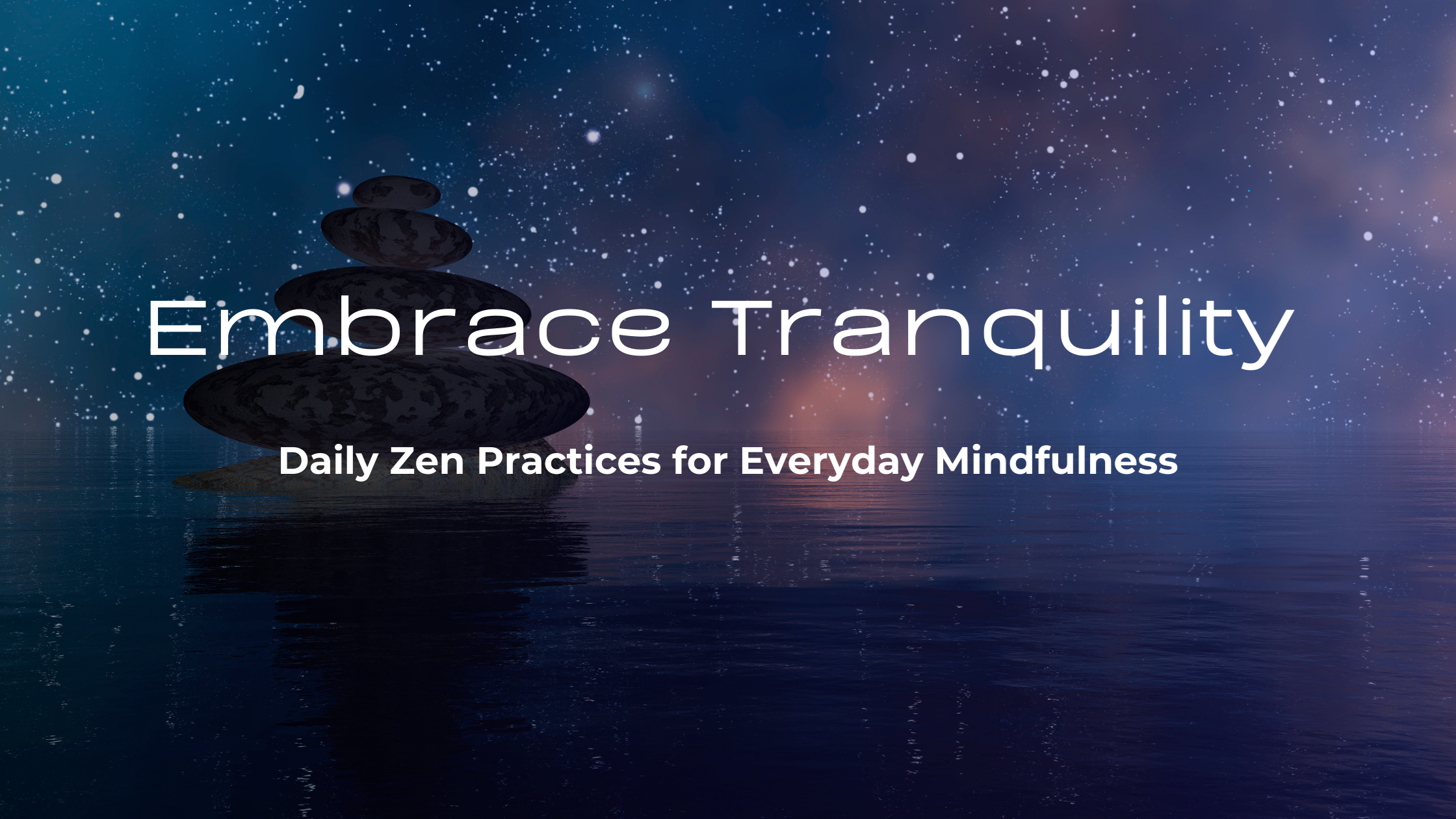
The Art of Zazen
Zazen is a unique form of meditation that involves sitting in a specific way, as practiced in Zen Buddhism. It helps us be mindful, calm and gain wisdom. Let's explore the art of zazen, learn how to do it, and discover the benefits it provides.
Benefits of Zazen
Doing Zazen promotes a sense of calmness and clearness in the mind and helps us become more present and aware of our body. This awareness can also carry over into our daily lives, making us more mindful.
Zazen helps us develop our inner calm by observing our thoughts and feelings without being overwhelmed. Through this practice, we can develop a sense of peace and clarity. It's normal to feel restless or uncomfortable during zazen, but with patience and practice, we can settle our minds. Adjusting our posture or trying walking meditation (kinhin) can also provide added comfort.
How to Practice Zazen:
- Getting Ready for Zazen: To do zazen, find a quiet and cozy place to sit. You can use a cushion or a chair that feels comfortable. Sit up straight and feel relaxed.
- Focusing on the Breath: Now, pay attention to your breath. Notice how it goes in and out. You can feel your breath by focusing on your nose or your tummy.
- Dealing with Thoughts: Sometimes, thoughts come into our minds during zazen, and that's okay. Instead of getting caught up in those thoughts, gently let them go. Bring your attention back to your breath and be in the present moment.
Deepening Your Practice
It is essential to practice zazen regularly. Find a time each day to meditate, and ensure you have a quiet place to do it. Start with short sessions and slowly make them longer as you get more comfortable. You can also learn from experienced teachers or join meditation groups to help you learn more and grow in your practice.
My Peaceful Moments
When I first started doing zazen, my mind was racing a million miles a minute, but with regular practice, I began to experience moments of peace and clarity that I had never felt before. These moments of peace and clarity became my motivation to keep practicing. Zazen has taught me that the mind is a powerful tool, and with practice, we can learn to control our thoughts and find moments of peace. It's not always easy, but it's definitely worth it. If you're feeling overwhelmed or restless, I encourage you to try zazen. You never know; it just might change your life.
Embracing the Journey
When starting your meditation practice, remember that even short moments of stillness are valuable. Embrace any challenges that come your way as opportunities for growth and improvement. As you explore your inner self, let the power of meditation bring peace and awareness to your daily life.
In our exploration of Zen Buddhism, we have learned about the art of zazen, its benefits, and how to practice it. Let's continue our journey, discovering more about Zen and the wisdom it can bring to our lives.

Exploring Kinhin: Meditation in Motion
In the world of Zen Buddhism, meditation goes beyond sitting still. Kinhin, also known as walking meditation, is an important practice that connects us with the essence of Zen philosophy and daily Zen. It acts as a bridge between seated meditation and our everyday activities, allowing us to experience mindfulness in motion. Let's dive into the art of Kinhin, learn how to practice it, and discover its transformative power.
How to Practice Kinhin
- Stand tall and relaxed, embodying the calm and peaceful qualities of Zen philosophy. Keep your shoulders relaxed and your gaze soft, looking slightly downward. Let your arms rest naturally by your sides.
- Begin with intention, embracing the essence of daily Zen. Before taking your first step, set an intention for your Kinhin practice. You may choose to stay present, cultivate gratitude, or embody qualities like compassion or joy.
- Mindfully lift your left foot, feeling the sensation as it leaves the ground. With each step, be aware of the connection between your foot and the earth. This reminds us of the interconnectedness of all things and the principles of Zen practices.
- Walk slowly and gracefully, maintaining a steady rhythm. Pay attention to the sensations of each step, feeling the movement and the contact with the ground. Let your breath guide the pace, finding a comfortable stride that resonates with Zen Buddhist meditation.
- Stay aware as you walk, focusing on the physical sensations of each step. Notice the engagement of your muscles, the pressure on the soles of your feet, and the gentle sway of your body. Fully experience the act of walking, embodying the mindfulness that Kinhin brings.
- Embrace your surroundings as you walk, expanding your awareness to include the environment. Take in the sounds, smells, and sights without getting too attached or distracted. Let them be part of the present moment, in harmony with the principles of Zen philosophy.
Incorporating Kinhin into Your Daily Life:
- During short breaks, take mindful walks. Whether it's in a park, on a city street, or even inside your office building, use this time to practice Kinhin. Be aware of each step and bring mindful awareness to your movements, aligning with the principles of daily Zen.
- If you walk as part of your commute, do it with presence. Instead of getting lost in thoughts or rushing to your destination, focus on the physical sensations of each step. Immerse yourself in the present moment, turning your walk into a Zen Buddhist meditation practice.
- Connect with nature by combining Kinhin with walks in parks, forests, or beaches. Let the beauty of the natural world enhance your practice, nurturing a sense of interconnectedness and grounding, in harmony with Zen practices.
A Walk in the Forest
I remember a time when I practiced Kinhin in a peaceful forest. As I walked slowly, I felt a deep harmony with nature. Each step brought me closer to the interconnectedness of all things. It was a transformative experience, aligning with the principles of Zen meditation, Zen philosophy, and the power of Kinhin.
In our search for personal growth and fulfillment, we've been learning about the benefits of meditation in Zen Buddhism. We've explored zazen and Kinhin as methods for this practice, and now we'll continue our journey into the wisdom and insights that Zen can offer to enhance our lives.
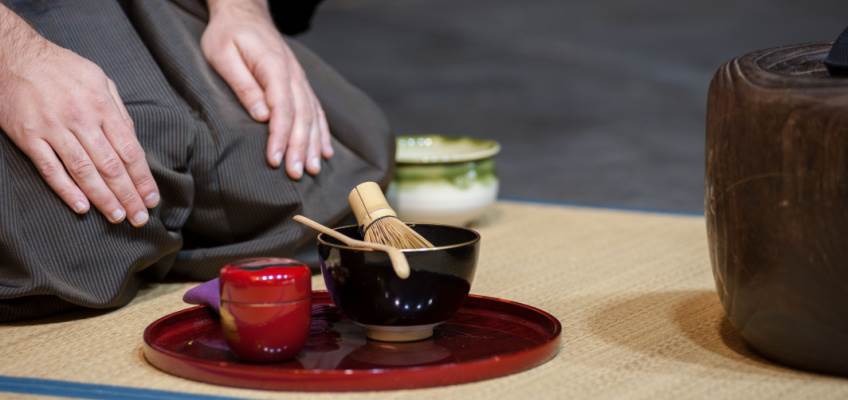
Tea Ceremony: A Ritual of Mindfulness
The tea ceremony in Zen Buddhism is a precise practice that emphasizes mindfulness and being present in the moment. The simple act of enjoying a cup of tea can promote mindfulness, peace, and harmony in your daily routine, and help you stay grounded and focused.
The Essence of the Tea Ceremony
The tea ceremony, also known as chanoyu or sado, is a fascinating tradition practiced in Japan for centuries. It is not just about drinking tea but a unique experience that incorporates kindness and mindfulness. Zen Buddhism heavily influences the ceremony, and participants strive to be fully present and grateful for everything around them. It is a beautiful way to gain a deeper understanding of Japanese culture and an excellent opportunity to experience a moment of tranquility in our busy lives.
Tea Ceremony Symbols and Mindfulness
In the tea ceremony, everything has a special meaning. The tearoom is calm and minimalistic, like Zen philosophy and the idea of being present daily. The things used in the ceremony, like the tea bowls and the tools, are chosen carefully for their aesthetic and what they represent. They remind us of the harmony between nature and people.
A Dance of Mindfulness
The tea ceremony requires precision and care in every movement executed. Participants in the ceremony focus intensely on brewing and serving the tea, savoring every moment with all their senses. Engaging in this ritual allows you to be fully present and appreciate the tea, similar to the principles of Zen meditation.
The host prepares and serves the tea to the guests, following a specific set of procedures and etiquette. The ceremony is steeped in tradition and culture, originating in China, and spreading throughout Japan and other parts of Asia. The tea used is a high quality matcha, which is a pure, powdered form of the green tea leaf, that is prepared in a special, ritually cleansed bowl, and whisked to a froth. The ceremony is not just about drinking tea but about the entire preparation and service experience.
The tea ceremony is a way to slow down and appreciate the moment while also connecting with others. It is a practice that can be enjoyed alone or in a group promoting mindfulness and relaxation. Next time you have a cup of tea, take a moment to savor it and appreciate all that went into its creation. You might find yourself experiencing a little bit of Zen.
Bringing the Tea Ceremony to Our Lives
We can also bring the tea ceremony's spirit into our daily lives. We should show respect and observe when we go to a tea ceremony. We can see how the host moves and follow their example. If we want to do a tea ceremony at home, we can choose good tea and take our time to make it. We can find a quiet space to focus on making the tea and enjoy it when we drink it. It's a way to be mindful and appreciate the flavors and feelings of the tea, just like when we do Zen meditation.
Experiencing a Tea Ceremony
During a trip to Japan, I had the opportunity to participate in a tea ceremony. As I stepped inside the tearoom, a feeling of peace and serenity washed over me, in line with the principles of Zen philosophy. The person conducting the ceremony moved with elegance and precision. As the hostess served me the tea, I held the warm bowl in my hands, feeling connected to the moment. Drinking the tea left me feeling grateful and content. This unforgettable experience demonstrated the power of being mindful, as seen in Zen Buddhism. Although I have always been a tea enthusiast, I now approach my tea drinking as a mindful experience.
The tea ceremony reminds us to slow down, appreciate simple things, and be present in our fast-paced world. Whether we watch or do the tea ceremony, it helps us be mindful, graceful, and connected to the world around us. As we continue learning about Zen Buddhism, let's remember the tea ceremony and bring its mindfulness into our daily lives.
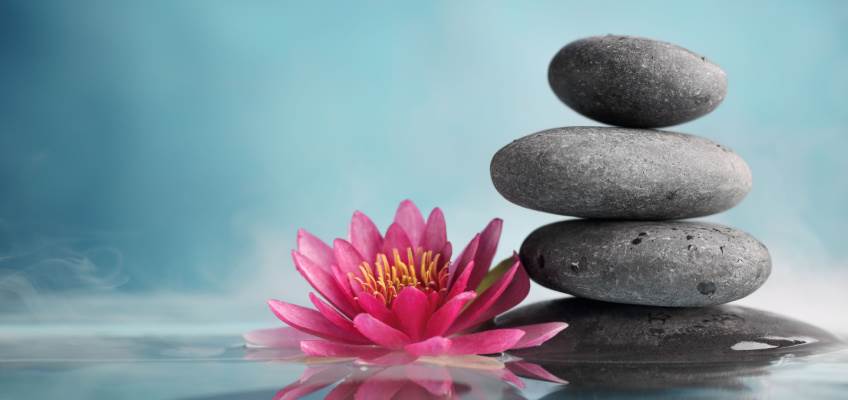
Living Zen: Bringing Mindfulness to Everyday Life
As we embark on our quest for inner peace and mindfulness, inspired by the teachings of Zen Buddhism, we can integrate Zen principles into our daily routines. By embracing the wisdom of Zen philosophy and practices, we can attain a sense of serenity and clarity and develop as individuals. Let's delve into the advantages of mindfulness and staying in the moment, acquire practical strategies for incorporating Zen mindfulness into our daily tasks, and uncover Zen's positive impact on our lives.
The Power of Mindfulness and Being Present
Mindfulness and being present, as taught in Zen Buddhism, have many advantages. When mindful, we fully engage in what we do and connect with ourselves, others, and the world around us. Mindfulness helps us become aware of our thoughts, feelings, and what's happening in our bodies to handle challenges more clearly and calmly.
Practical Tips for Daily Zen
- Enjoy the Little Moments: Bring mindfulness to your daily activities, like washing dishes or walking to school. Focus on what you are doing and pay attention to how it feels. Notice the sounds, smells, and sights around you, and enjoy the present moment.
- Take Your Time to Eat: Slow down and savor each bite of your meals, just like Zen practitioners do. Pay attention to how the food tastes and feels in your mouth and enjoy the different flavors. Be grateful for the food and think about where it came from.
- Be Thankful: Take a moment each day to think about the good things in your life. It could be something as simple as the sun shining or having friends and family who care about you. Being grateful helps us have a cheerful outlook and appreciate what we have.
- Connect with Nature: Spend time outdoors and appreciate the beauty of nature. Whether you walk in a park or sit under a tree, notice the colors, sounds, and feelings around you. Feel the ground beneath your feet and take deep breaths of fresh air.
Living Zen: Embracing Mindfulness
By practicing Zen mindfulness, we can align ourselves with the essential principles of Zen philosophy and practices. We become more present and peaceful, and we grow as individuals. It's about being mindful and present in each moment, bringing clarity, kindness, and a strong connection to the present moment.
In the world of Zen Buddhism, personal growth and mindfulness go hand in hand. By exploring Zen meditation, the tea ceremony, and daily Zen activities, we embark on a journey of self-discovery and growth. Discover your inner strength and unlock your full potential by embracing the power of Zen philosophy.
Zen teaches us to let go of worries and focus on the present moment. This helps us find inner peace and happiness. We learn to embrace change and see the beauty in every moment, no matter how small. So why not start your journey to a more mindful and fulfilling life today?
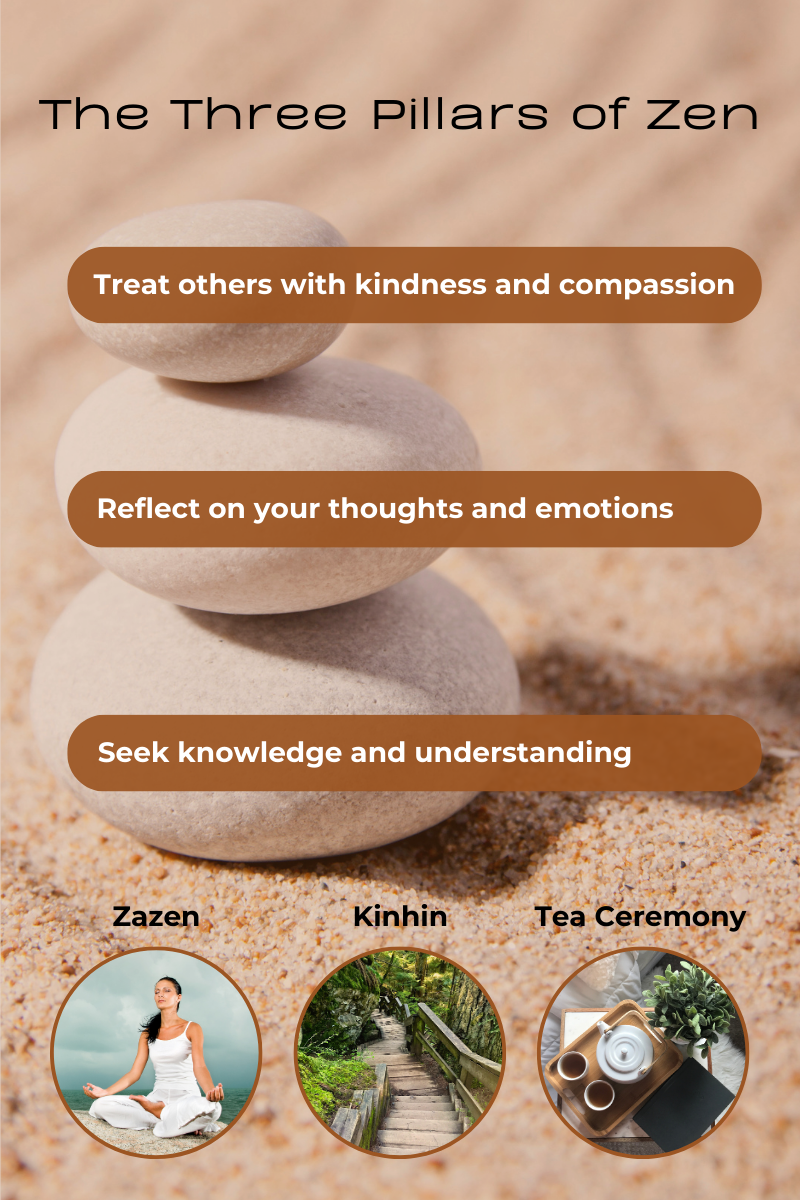
The Three Pillars of Zen
Adopting the three Pillars of Zen is essential to achieve personal growth and development.
The First Pillar is to treat others with kindness and compassion, as this benefits them and contributes to your well-being.
The Second Pillar involves taking time to meditate and reflect on your thoughts and emotions, which can help you better understand yourself.
The Third Pillar is to seek knowledge and understanding, which can help you become the best version of yourself.
By embracing these three pillars, you can lay a strong foundation for personal growth and fulfillment.
My Zen Journey
Through my Zen journey, I've realized the incredible power of mindfulness and inner strength. By embracing the principles of Zen and practicing meditation, I've discovered a sense of peace and gratitude that has transformed my life. I am now able to face challenges with unwavering courage and live my life authentically. I hope my journey inspires you to embark on your own path of self-discovery and find the inner peace and strength you deserve.
Embracing Zen: A Lifelong Journey to Mindfulness
In our journey to understand Zen Buddhism, we have delved into practices such as Zen meditation, the tea ceremony, walking meditation, and applying Zen principles in our everyday lives. Through these experiences, we have come to realize the transformative power of mindfulness and being present in the moment.
Finding Peace in a Busy World
In today's fast-paced world, finding inner peace and mindfulness is crucial. Zen Buddhism, with its ancient traditions and teachings, provides profound wisdom to guide us on this journey. By incorporating Zen practices into our lives, we can cultivate a more profound sense of presence, tranquility, and personal growth.
Take Small Steps on the Zen Path
To begin your journey of mindfulness and presence, start with these 5 small steps:
- Zen Meditation: Set aside dedicated time each day to sit quietly in meditation. Start with a few minutes and gradually increase the duration as you feel comfortable. Allow yourself to be fully present, observing your breath and thoughts without judgment.
- The Tea Ceremony: Experience the aesthetic and mindfulness of the tea ceremony. Attend a formal ceremony or create your ritual at home. Focus on the process of making and savoring tea, immersing yourself in the present moment, and cultivating gratitude.
- Embody Daily Zen: Infuse mindfulness and presence into your daily activities. Whether eating, walking, or doing simple chores, give your full attention to each moment. Appreciate the richness of the experience and embrace the principles of daily Zen.
- Dive into Zen Philosophy: Deepen your understanding and inspiration by exploring Zen philosophy and literature. Engage with koans, read Zen teachings, and seek guidance from experienced practitioners. Expand your knowledge to enrich your practice.
- Seek Community and Support: Connect with like-minded individuals on this journey. Join a meditation group, attend retreats, or participate in workshops. Sharing insights and supporting one another can enhance your mindfulness practice.
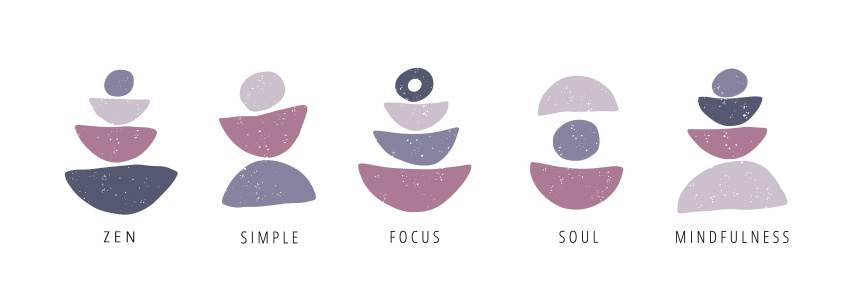
Embrace the Zen Path
Embracing the practices of mindfulness and Zen can lead to a journey of lifelong discovery filled with patience, curiosity, and an open heart. These practices allow for the discovery of inner peace, clarity, and a strong connection to the present moment. By embracing mindfulness, one can find joy, meaning, and a profound sense of connection to the world around them.
It's a journey that is truly worth taking.
 Get a Reading with Ava x6013
Get a Reading with Ava x6013
Ava is a compassionate psychic advisor with 21 years of professional experience. Her expertise spans clairvoyance, energy healing, mediumship, and intuitive insights. As a certified life and business coach, she empowers clients with wise and compassionate guidance. Ava also mentors and guides aspiring psychics to hone their skills. Unlock your inner wisdom and embrace a brighter future with Ava's illuminating guidance.
Leave A Comment
You must be logged in to leave a comment. click here to login

